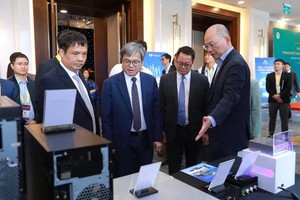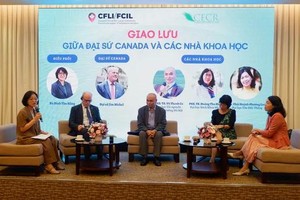
Globally, the stem cell domain serving human healthcare is experiencing rapid development, particularly highlighted by two Nobel Prizes awarded to stem cell researchers in 2007 and 2012, which unveiled numerous potential applications. Stem cells represent not merely a promising research field but a foundational platform for unprecedented medical innovations.
According to Le Tran Duy Sang from the Center for Statistics and Science & Technology Information of HCMC (CESTI), between 1981 and October 2024, the world has recorded approximately 25,000 patent applications for stem cell technologies in medical fields, 92.6 percent of which utilize human-derived stem cells. These cells are primarily applied in pharmaceutical development and therapeutic preparations, addressing conditions such as cancer, tumor management, musculoskeletal tissue regeneration, and skin restoration.
Since 1999, Vietnam has registered 87 inventions and utility solutions, with 19 patents belonging to research institutes, universities, government agencies, and domestic enterprises. These innovations predominantly focus on mesenchymal stem cell techniques in cultivation, pharmaceutical preparation, and therapeutic applications, most notably in musculoskeletal tissue regeneration.
Beyond medical applications, scientists are exploring stem cells in asexual reproduction, tissue cultivation, and human developmental research. These investigations help identify genetic issues, develop prevention strategies, and explore chromosomal abnormalities, including cancer tissue development. Human stem cells also serve as crucial models for testing new pharmaceutical interventions, offering more reliable predictive capabilities than traditional animal research models.
Recent years have witnessed stem cell trials targeting previously intractable conditions, including hematopoietic disorders and spinal cord injury-related paralysis. Stem cell banks have been established at Mekophar Pharmaceutical Corp. and Vietnam National Children's Hospital. Isolation procedures for stem cells from bone marrow, peripheral blood, umbilical cord blood, adipose tissue, and umbilical membrane have been mastered, with preservation and quality assessment protocols continually refined.
At the symposium “Trends in stem cell technology research serving the medical field”, held by CESTI, Assoc Prof Huynh Nghia, PhD MD, from HCMC Blood Transfusion and Hematology Hospital highlighted how hematopoietic stem cell transplantation offers renewed hope for patients with blood disorders, cancer, and immunodeficiencies. This is thanks to their extraordinary self-renewal capabilities to establish residence in bone marrow "niches" after intravenous injection, and maintain cryopreservation potential. Since 1995, the hospital has successfully conducted 628 blood stem cell transplantations.
Dr Pham Le Buu Truc from the HCMC Biotechnology Center noted that in 2021 alone, Vietnam experienced 276,000 cardiovascular-related fatalities. Consequently, cardiovascular pathologies demand extensive research, with stem cell therapies emerging as a promising avenue offering potential lifelines for patients.
CESTI Director Nguyen Duc Tuan emphasized that the global stem cell therapeutic journey has evolved into a transformative modality in regenerative medicine. To synchronize local research with regional and global standards, a comprehensive long-term strategy encompassing supportive policies and research-stimulating programs is essential.
A contemporary concern involves the proliferation of stem cell therapies aggressively marketed with sweeping curative promises, potentially misleading consumers. Social media platforms, e-commerce sites, and websites host hundreds of thousands of advertisements for stem cell products, particularly in aesthetic applications, often featuring components like placenta, amniotic membrane, and umbilical cord.
Many specialists caution that these advertised products may not actually contain genuine stem cells, urging consumers to exercise extreme vigilance against marketing campaigns promoting standardized stem cell injection protocols, as frequently encountered in spa settings and social media platforms.
























